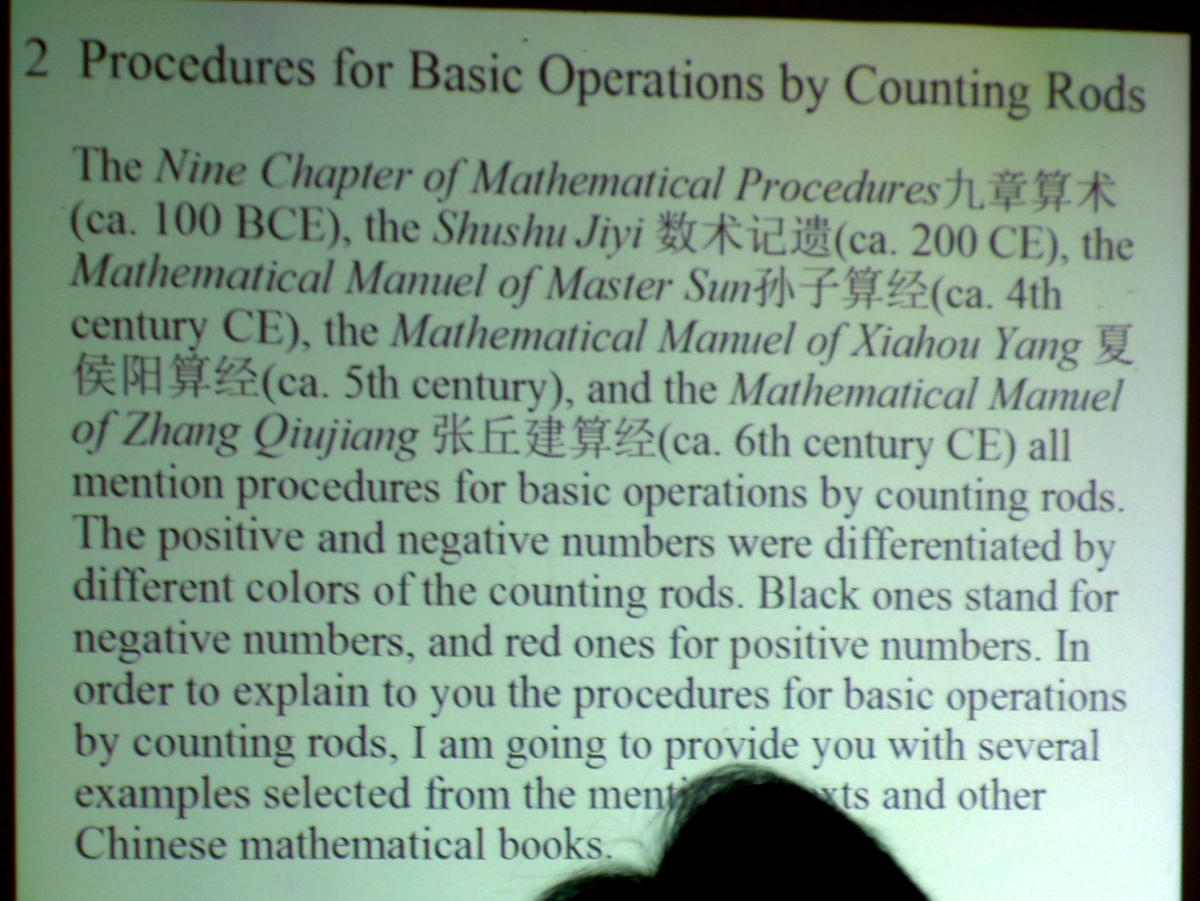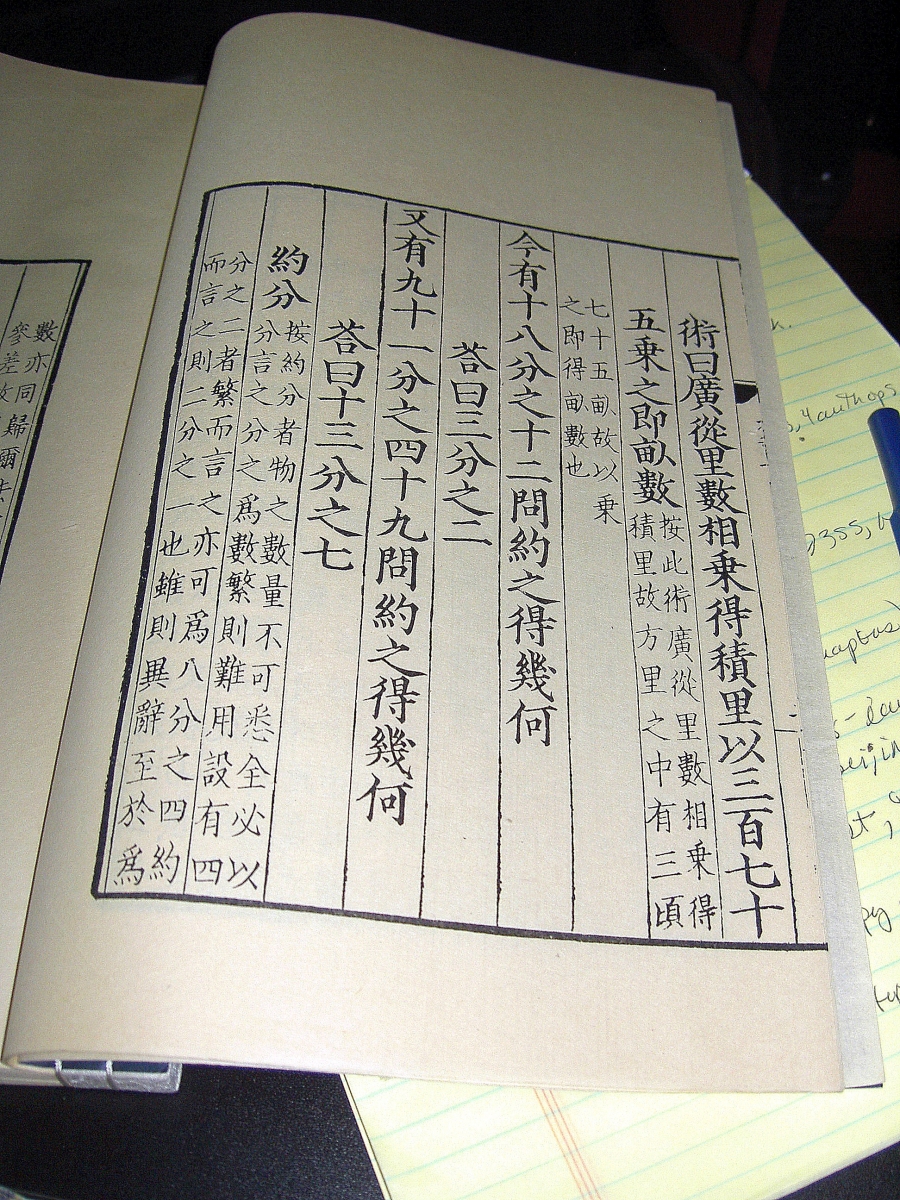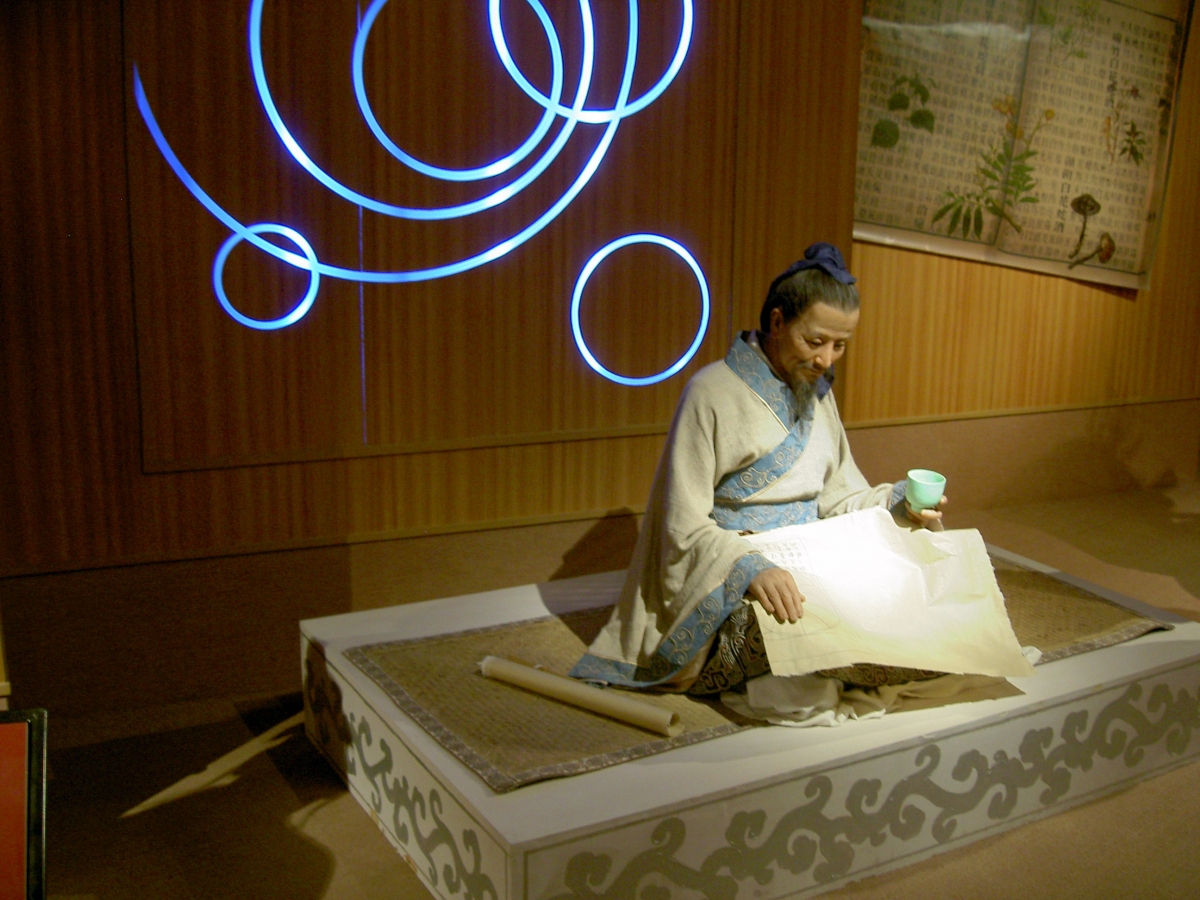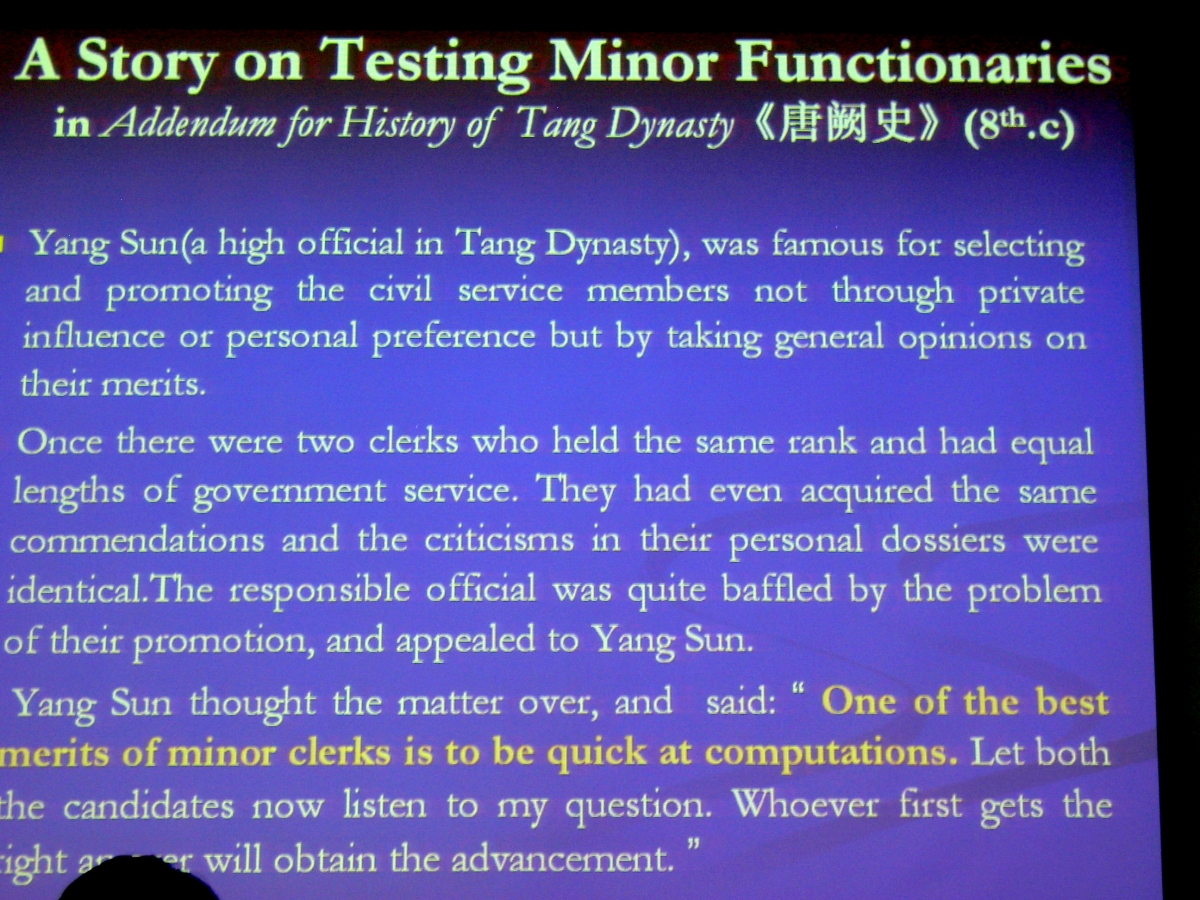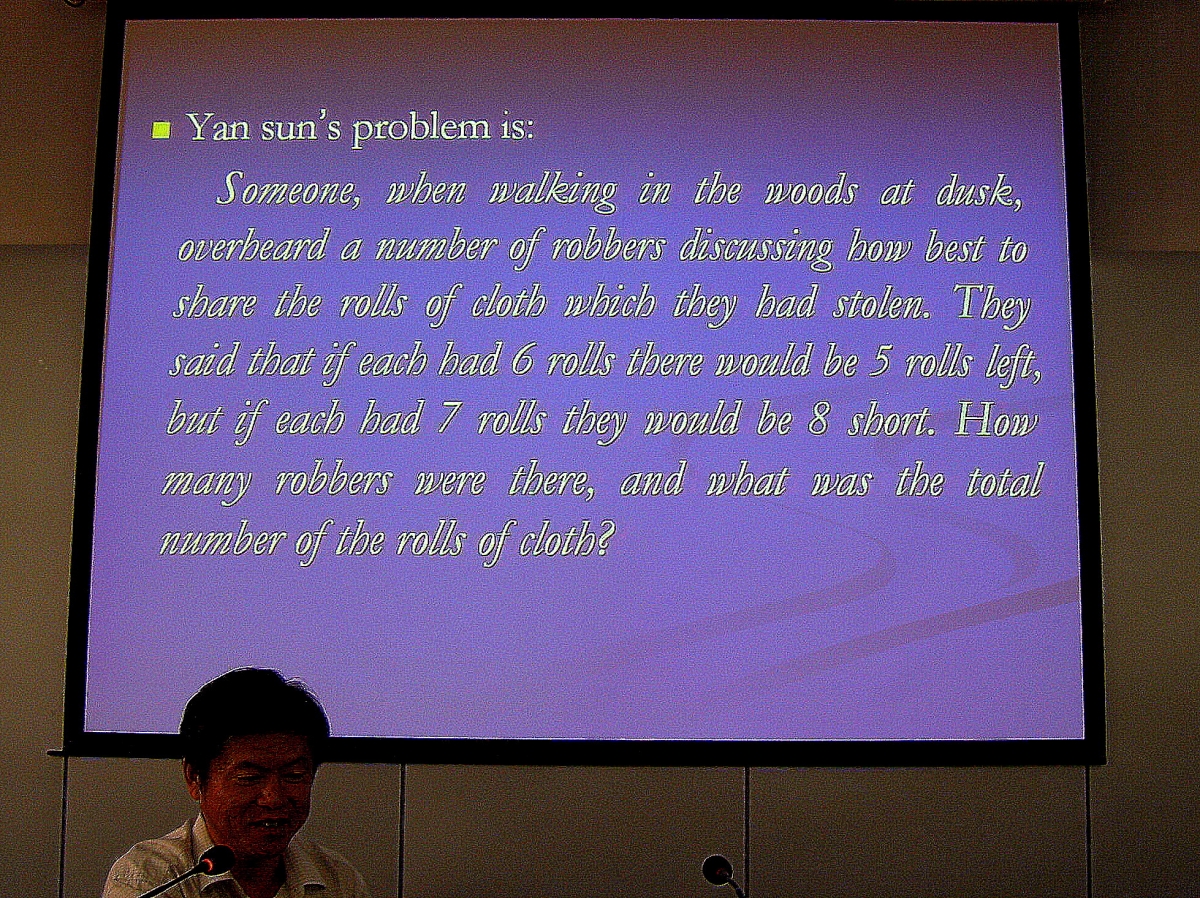Illustrating The Nine Chapters on the Mathematical Art: Their Use in a College Mathematics History Classroom
Introduction
Between 2003 and 2013, the MAA organized and offered Mathematical Study Tours, providing a wonderful opportunity for its members to travel to countries and regions that are important to mathematics, the history of mathematics, and mathematics education. Professionals from those countries welcomed the MAA travelers and shared their knowledge with us in lectures, formal panels, and informal discussions.
Figure 1. The travelers on the 2006 Mathematical Study Tour visit the Institute for the History of Natural Sciences in Beijing, China.
The mathematical leader of our tour was Dr. Yibao Xu, Professor of Mathematics at the Borough of Manhattan Community College, who sadly died too young in 2013; this paper is dedicated to his memory.

Figure 2. Tour leader Yibao Xu is shown in the Forbidden City, Beijing, outside an exhibit displaying mathematical and scientific instruments from the interaction between Chinese and western science between 1644 and 1795 (photo by the author).
The purpose of this paper is to provide photographs that help illustrate various statements that have been made about the significance and practical nature of the Nine Chapters. I use them in my classes on the history of mathematics to help the students internalize the various statements that we make about the Nine Chapters. The paper itself is based on my presentation at the January 2008 Joint Mathematics Meetings in San Diego as part of the MAA Session on Using Ideas from Asian Mathematics in the Classroom.
Illustrating The Nine Chapters on the Mathematical Art: Their Use in a College Mathematics History Classroom – The Text and Its Contents
The Nine Chapters on the Mathematical Art is widely acclaimed as "the supreme classical Chinese mathematical work" [Shen, v], "a kind of 'mathematical bible'" [Dauben 227, quoting Martzloff 127, who quotes Wang Ling's 1956 thesis 16], the "most influential of all Chinese mathematical texts" [Swetz, 8], and "the most influential of all Chinese mathematical texts ... which occupies a similar position in Chinese mathematics to that of Euclid's Elements in Western mathematics" [Joseph 135]. Present-day versions of the Nine Chapters are based on one that was compiled by Zhang Cang and Geng Shouchang, most likely around 100 BCE, according to the preface of Liu Hui to his important commentary in the 3rd century CE. Shen's edition includes the commentaries by Liu and by Li Chunfeng and others (7th century). Shen [1] and Martzloff [134] list additional commentaries from the 5th, 6th, 7th, 13th, and 19th centuries.
The transliteration of the title of this work (simplified Chinese: 九章算术; traditional Chinese: 九章算術; pinyin: Jiǔzhāng Suànshù [Wikipedia]) is variously given as Chiu Chang Suan Shu [Swetz and Joseph], Jiuzhang Suanshu [Shen], and Jiu zhang suan shu [Dauben]; here it will be convenient, as in Shen, to simply call it the Nine Chapters. The publication of Shen's translation in 1999 has made this work readily available in the English-speaking world.
Joseph Dauben notes that the title of the work has been translated into English in a number of ways in addition to the one given above. These include Arithmetic in Nine Sections; Computational Prescriptions in Nine Chapters; Nine Categories of Mathematical Methods; and The Nine Chapters on Mathematical Procedures [227]. The last of these is a translation itself from a 2004 French translation of the Nine Chapters by Karine Chemla and Guo Shuchun. We had the opportunity to meet and talk with Guo Shuchun at the Institute for the History of Natural Sciences, part of the Chinese Academy of Science in Beijing.
Figure 3. Guo Shuchun displays his and Karine Chemla’s translation from Chinese into French of the Nine Chapters; behind him is Tina Straley, then Executive Director of the MAA (photo by the author).
Unlike Euclid's Elements, the Nine Chapters is not organized as an axiomatic presentation of theorems and proofs; rather it is a collection of problems organized by topic and by the algorithms used for their solution. It is intended to be practical and pedagogical [Shen, vii] and was one of the works studied for official mathematics examinations for civil servants in the Tang Dynasty [Dauben 227].
The importance of the Nine Chapters is recognized among contemporary Chinese mathematicians and historians; Figures 4-6 are photographs of presentations that we saw in China that mentioned the Nine Chapters.
Figure 4. Dianzhou Zhang, of East Central Normal University in Shanghai, shows a slide from a lecture, "Mathematical Exchange Between China and the United States," which began with background on ancient Chinese mathematics (photo by the author).
Figure 5. Guo Sharong of Inner Mongolia Normal University shows a slide from a lecture, "Some New Thoughts on Chinese Mathematics During the 13th and 14th Centuries – The Construction of Mathematical Models." Some problems in the work of the 13th-century mathematician Li Ye, namely Yuan Cheng Tu Shi (Illustration of a Circle Town), can be traced to the Nine Chapters (photo by the author).
Figure 6. A lecture by Feng Lisheng of Tsinghua University, "From Counting Rods to Abacus: Traditional Chinese Counting Techniques," included a discussion of the use of counting rods to perform basic arithmetic operations in the Nine Chapters (photo by the author).
Table of Contents of The Nine Chapters on the Mathematical Art
Now, we turn to the mathematical content of the Nine Chapters. The titles of the nine chapters, with a brief summary of the content of each, are as follows [Haack]:
Chapter 1. Field Measurement. This chapter includes problems to find the areas of rectangles, triangles, trapezoids, circles, and related regions. Arithmetic techniques are developed to carry out computations with fractional quantities.
Chapter 2. Millet and Rice. This chapter includes problems of proportions and unit prices. The Rule of Three (similar to cross multiplication) for solving proportions is seen as an extension of the work with fractions in the first chapter.
Chapter 3. Distribution by Proportion. This chapter extends the problems solved via proportion in the previous chapter.
Chapter 4. Short Width. This chapter seeks the side or diameter of a region from known areas and volumes. Arithmetic results developed include algorithms to extract square roots and cube roots by hand.
Chapter 5. Construction Consultations. This chapter seeks the volumes of a number of solids that occur in construction problems. Formulas for the solution of such problems are developed, often in several different ways.
Chapter 6. Fair Levies. Further extensions of the proportion problems of Chapters 2 and 3 are developed here. There is also a consideration of the sums of arithmetic progressions. The kinds of word problems that appear include work problems and distance and rate problems.
Chapter 7. Excess and Deficit. The chapter title refers to a technique to solve two linear equations in two unknowns [double false position]. Again, a variety of word problems are solved using this technique.
Chapter 8. Rectangular Arrays. Problems of agricultural yields, the sale of animals, and a variety of other problems, all leading to systems of linear equations, are solved by a method that is known in the West as Gaussian elimination. The problems lead to systems ranging from two equations in two unknowns to six equations in six unknowns, and one problem leads to an indeterminate system of five equations in six unknowns.
Chapter 9. Right-angled Triangles. Problems in surveying and in the lengths of various line segments are solved using the Gougu Rule, the Chinese version of the theorem known in the West as the Pythagorean Theorem. The problems demonstrate familiarity with Pythagorean triples.
Illustrating The Nine Chapters on the Mathematical Art - In the Classroom: Field Measurement
Chapter 1, "Field Measurement"
When I discuss Chapter 1, "Field Measurement," with my students, I use photographs of a 1981 reproduction of a 1248 edition of the Nine Chapters, taken at the Institute for the History of Natural Sciences in Beijing; see, for example, Figures 7 and 8, below.
Figure 7. In this image of a 1981 reproduction of a 1248 edition of the Nine Chapters, it is clear that the book opens from the left, so that it is to be read from right to left (photo by the author).
Figure 8. Problem 5 is presented on an early page in the first chapter, “Field Measurement,” of the Nine Chapters (photo by the author).
The text of Problem 5 (see Figure 8, above) is in columns. In my class, we have discussed the relevant Chinese numeration system, so that I ask my students to find the numerals in the fourth column from the right. Typically, someone readily finds the numerals 18 (the third and fourth characters from the top) and 12 (the seventh and eighth characters from the top). In the next column, the fifth column from the right, they find the numerals 3 (the third character from the top) and 2 (the bottom character). With a little questioning, the students offer that this page shows something equivalent to the reduction of the fraction 12/18 to 2/3 [Shen 64].
Chapter 1 "Field Measurement" also includes the computation of the area of a circle. Two problems (31 and 32) and four rules are given to compute the area of a circular field. The data of the problems indicate a value of 3 for \(\pi\) (e.g., the circumference is 30 units and the diameter 10 units). Had the diameter and the circumference been correct, the first rule, "Multiplying half the circumference by the radius" [Shen 88], would yield the correct result. Thirteenth-century commentators Li et al. suggest using 22/7 for \(\pi,\) while Liu suggests using 157/50, the familiar 3.14, for \(\pi\) [Shen 92]. According to Shen, Li et al. seemed to ignore the work of Zu Chongzhi, who in the 5th century computed \(\pi\) to be between 3.1415926 and 3.1415927.
Figure 9 (below) shows a wax figure of Zu Chongzhi carrying out his computations, from the Chinese National Museum near Tiananmen Square. It is a treat to see a mathematician recognized this way. Other wax figures included sports heroes (including Michael Jordan), political figures, and western scientists (Isaac Newton, Albert Einstein, and Bill Gates!).
Figure 9. A wax figure of Zu Chongzhi carrying out his computations is in the Chinese National Museum in Beijing (photo by the author).
For a photograph of Liu Hui’s computation of \(\pi\) by the method of exhaustion, as shown in a 16th century copy of The Nine Chapters on the Mathematical Art, see Mathematical Treasures – Jiuzhang suanshu in MAA Convergence.
Illustrating The Nine Chapters on the Mathematical Art - In the Classroom: Rice-huskers and City Walls
Chapter 2, "Millet and Rice"
The focus of Chapter 2, "Millet and Rice," is on exchange rates for rice and millet in various states of preparation. This topic often strikes my students as insignificant. Figure 10 helps me make the point that this is an important part of the Chinese culture. The photograph shows rice being husked, in a brick relief now in the National Museum of China in Beijing. The relief is from the Eastern Han dynasty (25-220 CE), which is particularly nice in that it dates from the same time as the compilation of the Nine Chapters.

Figure 10. This brick relief of rice-huskers from the Eastern Han dynasty (25-220 CE) is in the National Museum of China in Beijing (photo by the author).
Chapter 5, "Construction Consultations"
"Construction Consultations" (Chapter 5) includes volumes of trapezoidal prisms. Rather than being theoretical geometric shapes, such solids are used in the construction of walls of cities such as Xi'an, so the problems are of practical value. Figure 11 depicts a model of the city walls of Xi'an and Figure 12 depicts modern-day city walls.
Figure 11. A cross-section of a model of the wall of Xi'an is on display in the marvelous Shaanxi History Museum. The inside of the wall faces us. (Photo by the author)
Figure 12. In this photograph of part of the present-day wall of central Xi'an, the slanted nature of the wall is apparent. The photographer seen part way down the steps is MAA member and frequent study tour participant, Professor John Wilkins of California State University-Dominguez Hills. (Photo by the author)
Illustrating The Nine Chapters on the Mathematical Art - In the Classroom: Excess and Deficit
Chapter 7, "Excess and Deficit"
Chapter 7, "Excess and Deficit," provides a technique to solve what we today would describe as two linear equations in two unknowns via a method called “double false position” in the West. That this topic remains of interest to scholars can be seen in a presentation by Ji Zhigang of Shanghai Jiao Tong University, "The Rule of False Double Position: From Suàn Shù Shū to Liber Abaci." Figure 13 shows a slide from Ji Zhigang's presentation that introduces a problem from the Nine Chapters that is solved by the method of double false position.
Figure 13. This slide from Ji Zhigang's presentation introduces a problem from the Nine Chapters that is to be solved by the method of double false position (photo by the author).
In the solution, the number of people is determined by computing \[\frac{3+4}{8-7}=7\] and the item price by \[\frac{8\cdot 4+7\cdot 3}{8-7}=53\] [Shen 360-361]. In my class discussion of Double False Position, we first show that the answer obtained by the procedure for this particular problem satisfies the story of the problem. We then derive the algebraic equations that describe the problem and use direct substitution to show that the answer will always be correct. Finally, in order to see how one might arrive at the formula given by Double False Position, we have the opportunity to discuss interpolation (now a largely lost skill) and also use analytic geometry to derive the formula. Seeing this variety of approaches makes this is a rich problem for future teachers.
Illustrating The Nine Chapters on the Mathematical Art - In the Classroom: Right-angled Triangles
Chapter 9, "Right-angled Triangles"
Chapter 9, "Right-angled Triangles," includes several problems in which we are given a square city with gates opening in the middle of the sides (for example, problems 19-21). My students have sometimes greeted this problem with some skepticism, feeling that it is artificial and akin to the "consider a spherical cow" joke! After all, in their experience, the walls around cities are often in shapes that are curves or non-rectangular polygons. But, in fact, city walls and estate compounds in China often are and were square, as Figures 14-17 attest.
Figure 14 shows the Watchtower at the northeast corner of the Forbidden City in Beijing. While the Forbidden City is not square, at least it is rectangular. The early map of Xi'an from the Shaanxi History Museum in Figure 15 shows that it was nearly a square. Figure 16 is another photograph of a present day city wall of central Xi'an that illustrates just how straight the wall is; this is one of the four sides of a rectangular wall. Figure 17 shows a pottery model now in the National Museum of China in Beijing. This model of a square compound dates from the Wu Three Kingdoms period (229-280 CE).
Figure 14. This photograph of the Watchtower at the northeast corner of the Forbidden City in Beijing illustrates a right-angled corner of the rectangular Forbidden City (photo by the author).
Figure 15. This early map of Xi'an from the Shaanxi History Museum shows that the city’s boundaries formed a nearly square rectangle (photo by the author).
Figure 16. This photograph depicts a present-day city wall of central Xi'an. The walls provide a wonderful promenade for walking; enjoying it here are MAA travelers Ruth and Ken Ross, Tina Straley, and the author's wife, Linda Haack. (Ken Ross served as president of the MAA in 1995 and 1996. Sadly, Ruth Ross died in 2015.) For the purposes of this article, notice how straight the wall is. It is one of the four sides of a rectangular wall (photo by the author).
Figure 17. This pottery model of a square compound dates from the Wu Three Kingdoms period (229-280 CE). It is now in the National Museum of China in Beijing (photo by the author).
Illustrating The Nine Chapters on the Mathematical Art - In the Classroom: Civil Servants
I conclude the presentation on the Nine Chapters on the Mathematical Art to my History of Mathematics class by exhibiting some photos that demonstrate the importance of mathematics to civil servants, and the importance of civil servants themselves, in Chinese culture. The slides in Figures 18-19, from Ji Zhigang's lecture, "The Rule of False Double Position: From Suàn Shù Shū to Liber Abaci," mentioned earlier, tell the story of using a mathematics problem to decide which civil servant to promote during the Tang Dynasty (618-907 CE).
Figure 18. This slide from Ji Zhigang's lecture describes Yang Sun's strategy of using a mathematics problem to decide which of two civil servant to promote (photo by the author).
Figure 19. This slide from Ji Zhigang's lecture offers the mathematics problem to be solved by the two candidates for promotion within the civil service of the Tang Dynasty (618-907 CE). The candidates should have recognized it as a problem of "excess and deficit" and solved it quickly. (Answer: 13 robbers, 83 rolls) (Photo by the author)
Figures 20-22 depict pottery statues of civil servants from the National Museum of China in Beijing, showing the respect with which the civil servants were regarded through a number of periods of Chinese history.

Figure 20. This pottery statue of a civil servant from the Sui Dynasty (581-618) is in the National Museum of China in Beijing (photo by the author).
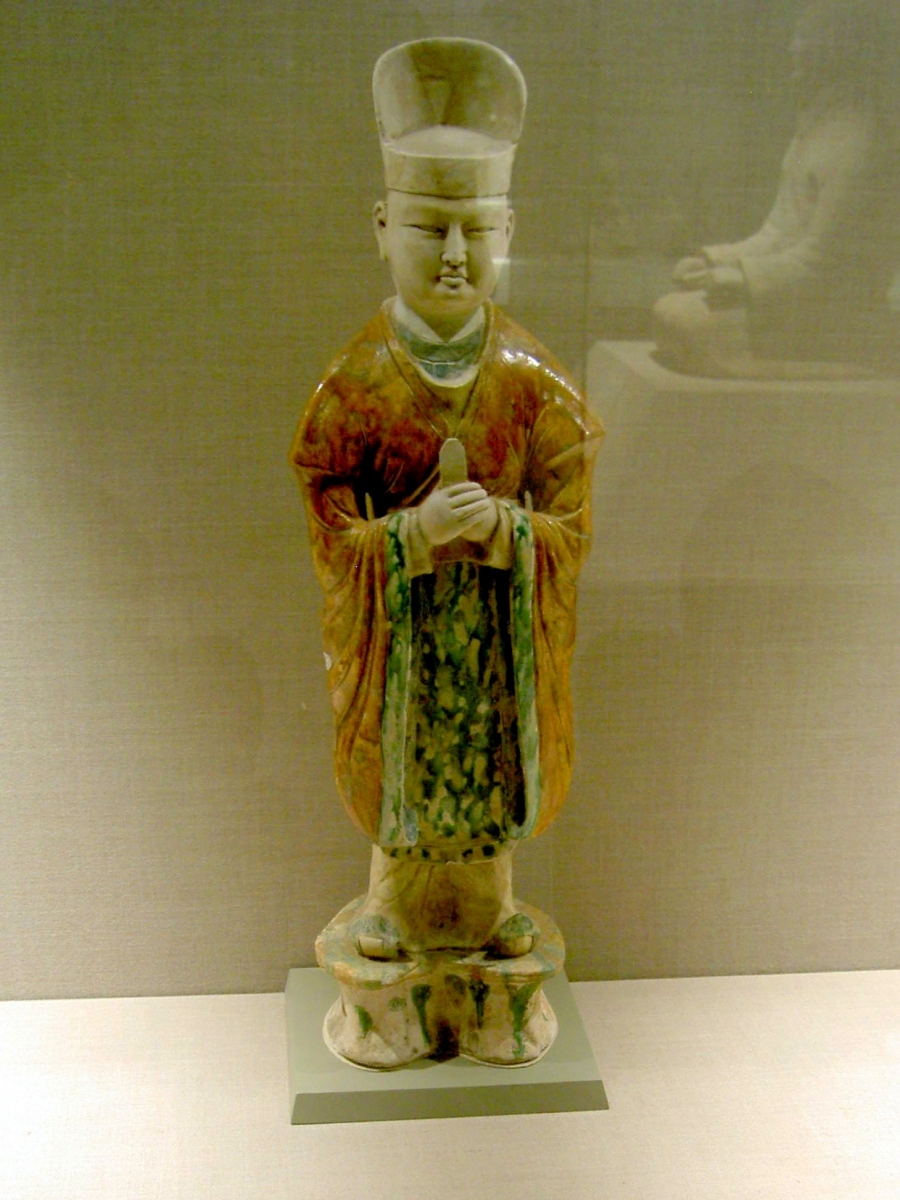
Figure 21. This pottery statue of a civil servant from the Tang Dynasty (618-907) is in the National Museum of China in Beijing (photo by the author).

Figure 22. This pottery statue of a civil servant from the Five Dynasties and Ten States (909-945) is in the National Museum of China in Beijing (photo by the author).
Illustrating The Nine Chapters on the Mathematical Art: Their Use in a College Mathematics History Classroom – Conclusion and References
Conclusion
I hope that you can see the contribution made by the study tour of China to my appreciation of the Nine Chapters. Although cultural context for the Nine Chapters was merely a small part of what we learned on the trip, we can now share it with our students and colleagues. I have found that it truly enriches the experience of my students in the history of mathematics.
About the Author
Joel Haack is a professor of mathematics at the University of Northern Iowa, with mathematical interests that include the history of mathematics, algebra, probability and statistics, and the connections between mathematics and the arts and humanities. Joel and his wife Linda were frequent travelers with the MAA Mathematical Study Tours, having traveled with the group to Greece, England, Mexico, China, Russia, Switzerland, Germany, Ecuador, Guatemala, Honduras, and Italy. Returning to the faculty after 20 years in administration, Joel is pleased to be able to share what he learned on the MAA Study Tours with his students.
References
Dauben, Joseph W., "Chinese Mathematics," The Mathematics of Egypt, Mesopotamia, China, India, and Islam: A Sourcebook, ed. Victor Katz, Princeton: Princeton University Press, 2007, 187-384.
Haack, Joel, "A Sampling of The Nine Chapters on the Mathematical Art," ICTM [Iowa Council of Teachers of Mathematics] Journal 31 (Spring, 2005), 23-28.
Joseph, George Gheverghese, The Crest of the Peacock: Non-European Roots of Mathematics, New York: Penguin Books, 1991.
Martzloff, Jean-Claude, A History of Chinese Mathematics, Berlin: Springer-Verlag, 1997.
Shen Kangshen, John N. Crossley, and Anthony W.-C. Lun, The Nine Chapters on the Mathematical Art Companion and Commentary, Oxford: Oxford University Press and Beijing: Science Press, 1999.
Swetz, Frank and T. I. Kao, Was Pythagoras Chinese? An Examination of Right Triangle Theory in Ancient China, University Park, PA: The Pennsylvania State University Press and Reston, VA: National Council of Teachers of Mathematics, 1977.
Wikipedia, "The Nine Chapters on the Mathematical Art," https://en.wikipedia.org/wiki/The_Nine_Chapters_on_the_Mathematical_Art, accessed April 7, 2017.




